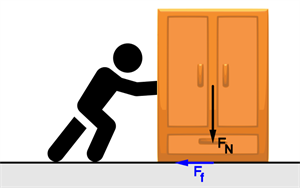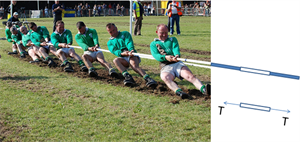PDF chapter test TRY NOW
Human beings are so interested in things around them. Objects around us are related to one another. Some objects are at rest, and some are in motion. Rest and motion are interrelated terms.
In the previous classes, you learned about various motion types such as linear motion, circular motion, oscillatory motion, etc.,. So far, you have examined the motion of bodies in terms of their displacement, velocity, and acceleration. In this section, let us study the cause of motion.
In the previous classes, you learned about various motion types such as linear motion, circular motion, oscillatory motion, etc.,. So far, you have examined the motion of bodies in terms of their displacement, velocity, and acceleration. In this section, let us study the cause of motion.
When an object starts moving from its rest position, a question that arises in our mind is ‘what makes the object move?’
Similarly, when a moving body comes to rest, you would like to understand what brings it to rest?
Suppose a moving body speeds up or slows down or alters its direction;what makes it to speed up or slow down? What changes the direction of motion?
The typical answer for all the above questions is ‘Force’.
In a layman’s understanding of motion, a body needs a ‘push’ or ‘pull’ to move, bring to rest or change its velocity. Hence, this ‘push’ or ‘pull’ is called ‘force’.
 Push  Pull |
Let us define force in a more scientific manner using the three laws proposed by Sir Isaac Newton. Before Newton expressed his three laws of motion, a different perception about the force and motion of bodies prevailed.These laws help you understand the motion of a body and predict the future course of its motion if you know the forces acting on it.
Let us first study these ideas and then eventually learn about Newton’s laws in this chapter.
Let us first study these ideas and then eventually learn about Newton’s laws in this chapter.
Reference:
https://commons.wikimedia.org/wiki/File:Friktion-force.svg
https://commons.wikimedia.org/wiki/File:Tug_Of_War_Tension.png
